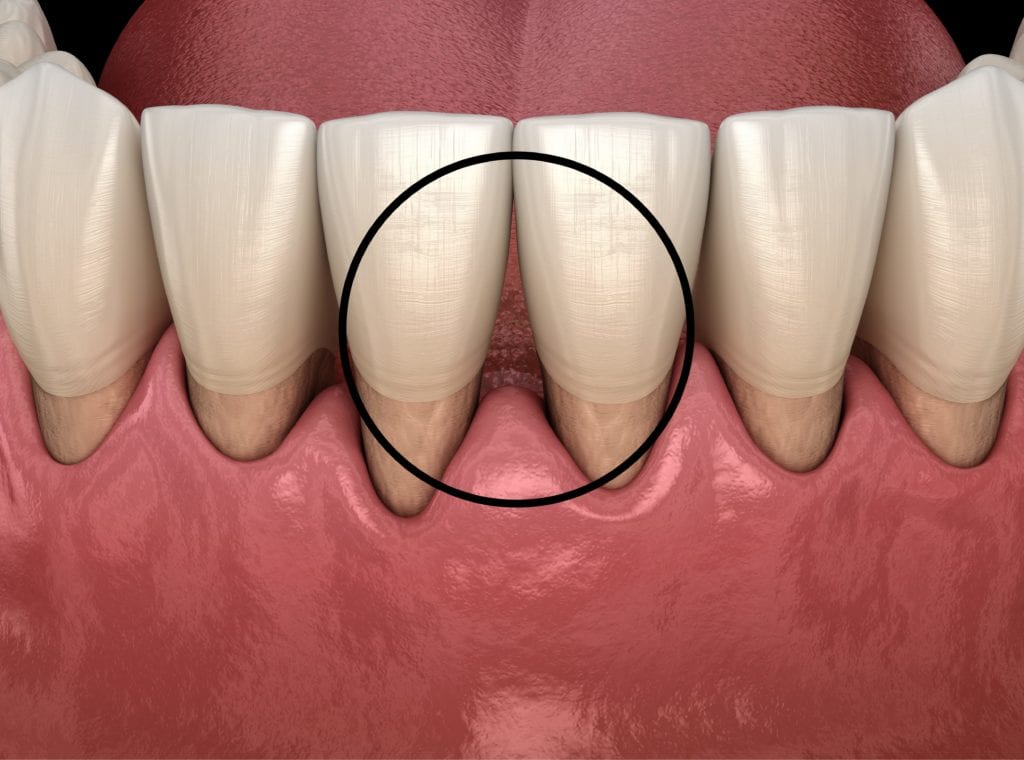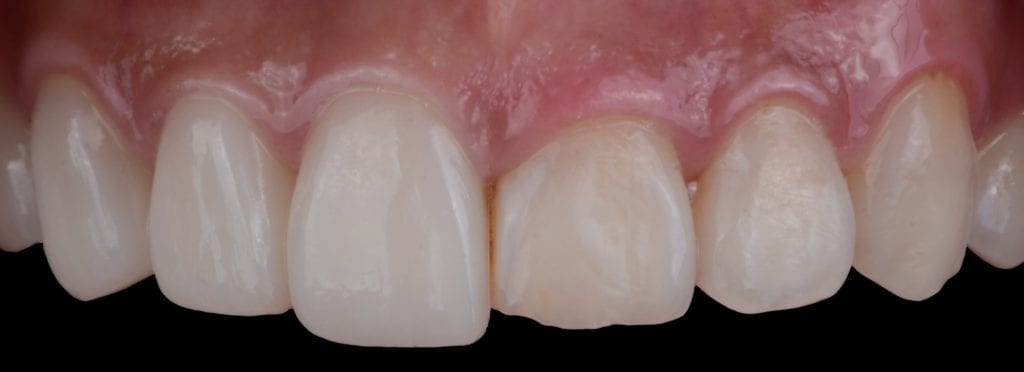
Many people are familiar with famous triangles such as the Bermuda triangle or the pythagorean triangle. Not as many people are familiar with dentistry’s black triangle. When it comes to having a beautiful smile, having any kind of triangle, let alone a black triangle, does not sound desirable.
In dental terms, a black triangle is the name given to the gaps between teeth. These gaps are also sometimes referred to as black triangle disease, open gingival embrasures, and the loss of interdental papilla. The name ‘black triangle’ comes from the dark, triangular appearance that the gaps between teeth create.
Black triangles are quite common and it is estimated that around 30% of adults have some form of a black triangle. The most common reason for black triangle formation is due to bone loss and gum recession. As the gums recede, or pull away from the teeth, spaces between the tooth roots become visible. Both bone loss and gum recession are usually the result of advanced gum disease. In some cases, however, a black triangle can also form due to teeth movement.
Most people desire to fix gaps between their teeth because they want to improve the appearance of their smile. Additionally, eliminating gaps between the teeth can also make your entire face look younger and more vibrant. Luckily, black triangles can easily be corrected with certain cosmetic dental treatment, including:
Porcelain Veneers
Veneers are thin porcelain shells that are adhered to the front surface of the teeth. They are customized to your smile and can be used to add tooth structure, as well as improve the contour of your teeth. Once veneers are applied, this closes the gap between the two teeth and eliminates the black triangle. In order for them to fit over the natural tooth properly, your dentist must remove a small amount of tooth enamel prior to placing the veneers.
Porcelain Crowns
Another cosmetic treatment used to correct black triangles are dental crowns, or tooth-shaped caps. While veneers cover the front side of the teeth, a dental crown is placed over the top of the tooth and covers the entire tooth structure. Dental crowns are ideal for correcting black triangles when the cause is a lack of tooth structure. Like veneers, dental crowns will add enough structure to close the gap between teeth and eliminate the black triangle. However, dental crowns require a significant reduction in the size of the tooth, therefore they are generally recommended for cases where the tooth is already lacking structure or has been affected by decay.

Cosmetic Bonding
Cosmetic bonding, also known as composite bonding or dental bonding, is another option for eliminating black triangles. Unlike veneers and dental crowns, cosmetic bonding is a minimally-invasive approach that does not require the modification of your natural tooth structure. Instead, the composite resin is applied directly to the tooth where it will be hardened in place. However, since cosmetic bonding uses composite resin instead of porcelain, it does not last as long as the other two solutions. Nevertheless, it can still adequately fill the gaps between teeth and eliminate a black triangle.
As you can see, there are a few different solutions to eliminate a black triangle by filling in the gaps between the teeth. Even if you have never heard of a black triangle before, if you have gaps between your teeth caused by gum recession, you may have already been looking for a way to fix this.

Dr. Admar holds dual certificates — a Bachelor of Dental Surgery (BDS) in 2010 from India and a Doctor of Dental Surgery (DDS) in 2014 from Canada. He is now a full time practicing dentist in Kamloops where he provides a variety of services. Dr. Admar spends hundreds of hours in continued dental education to stay up to date in cosmetic and implant dentistry and he has achieved several advanced qualifications.


